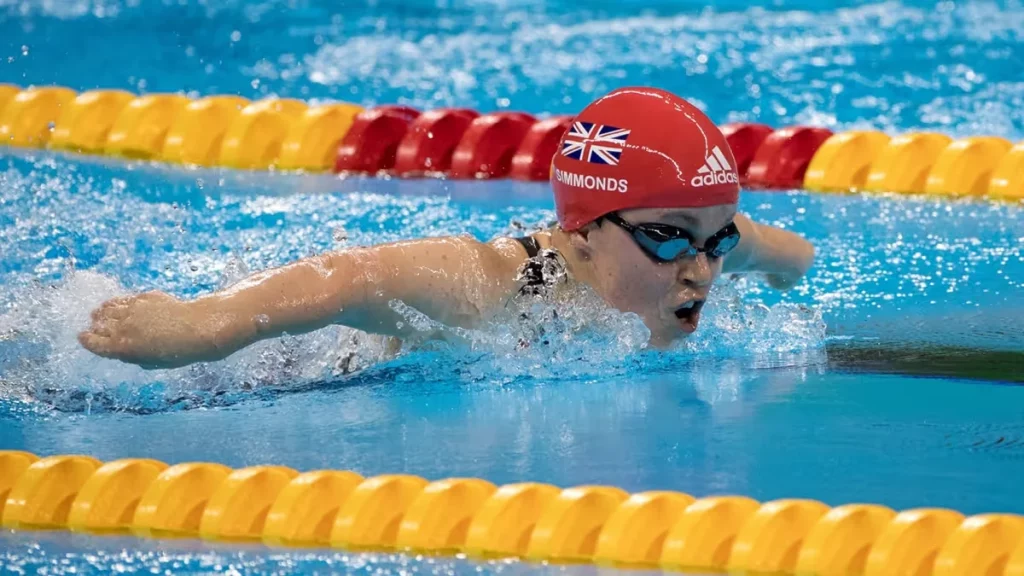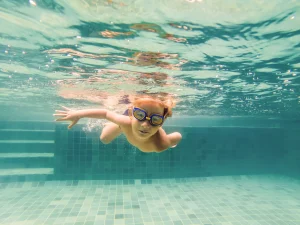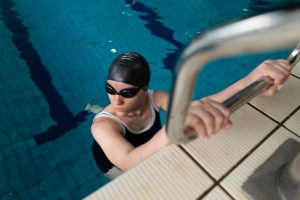Swimming with disabilities is an extremely comprehensive sporting and therapeutic practice, with great potential to transform lives.
Across the United Kingdom, several initiatives are being implemented to encourage and increase the number of participants with disabilities in swimming. These actions are justified, as frequent swimming improves autonomy, self-esteem, and quality of life.
Data from Swim England show that, in 2023, more than one million people with disabilities took part in aquatic activities.
In addition to the benefits provided by sport, swimming with disabilities promotes inclusion, health, and physical and emotional development in a safe and welcoming environment.
The importance of swimming with disabilities
The aquatic environment facilitates movement and encourages the participation of people with physical, intellectual, or sensory disabilities. Water reduces impact on muscles and joints, making mobility easier and promoting a sense of freedom.
For many, this environment makes it possible to experience movements that would be difficult or even impossible outside the water.
We should view swimming with disabilities not merely as physical activity, but also as a powerful tool for social inclusion.
From a psychological perspective, it helps to boost confidence, independence, and well-being, while also reducing symptoms of anxiety and depression.
When joining an adapted swimming class, the student finds a space to socialise, make new friends, and take an active part in a community.
Proven benefits of swimming with disabilities
Adapted swimming, when practised regularly, offers a wide range of benefits beyond the physical:
- Improved cardiorespiratory conditioning and muscle strength;
- Increased mobility and motor coordination;
- Reduced tension and pain caused by muscle stiffness;
- Development of autonomy and self-confidence;
- Social integration and improved self-esteem;
- Better posture and reduced joint pain;
- Cognitive stimulation, particularly in children with intellectual disabilities or on the autism spectrum.
Students and families progressively notice these improvements, which motivates them to remain engaged in the practice.
Inclusive methodologies in swimming

There are various methodologies that make adapted swimming accessible and enjoyable. Some of the most commonly used are:
Understanding individual needs
Firstly, it is essential to understand each student’s specific needs. Factors such as type of disability, motor skills, sensory sensitivities, and comfort levels in the water must be taken into account.
This allows for activities to be introduced gradually, respecting limits while celebrating every small achievement.
Structure and accessibility in facilities
Instructors, schools, and even the physical infrastructure must be prepared to ensure full inclusion. For example, classes should be smaller in size, as students require greater attention.
On the other hand, lesson times, rest breaks, and opportunities for reorientation may be longer, especially for students with attention deficit or hyperactivity.
Moreover, facilities must be accessible, with ramps, handrails, and pools with adapted entries, particularly for students with reduced mobility.
Use of support materials
Adapted equipment is essential for swimming with disabilities. Floats, kickboards, armbands, and other aids help with adaptation to the aquatic environment, expanding movement possibilities and enabling children and adults to enjoy the experience in the water safely.
Playful resources
Games and aquatic activities encourage learning in a natural way, making lessons lighter and more enjoyable, especially for children.
Inclusive communication
For people with hearing or intellectual disabilities, visual resources and sign language may be crucial. In the case of visual impairment, tactile instructions and practical demonstrations make all the difference.
Group integration and parental involvement
Group activities encourage the exchange of experiences and promote socialisation. The sense of belonging is one of the greatest benefits of inclusive practice.
It is also important to involve parents in the learning process, keeping them informed about goals, progress, and challenges. Where possible, practising at home with private lessons and specialised instructors is highly recommended.
The inclusive experience with specialised instructors
Success in swimming with disabilities depends directly on the instructors’ training. In addition to mastering adapted teaching techniques, it is vital that professionals are sensitive to individual needs and able to adapt lessons and communication accordingly.
At Easy2Swim, we work with qualified and experienced instructors who support people with a wide range of disabilities. We value empathy, personalised activities, and the creation of a welcoming environment.
Lessons can take place in your home pool or at a club, with safety and comfort, particularly for children and adolescents.
With a dedicated team and adapted structure, each student can experience swimming in a safe, accessible, and inclusive way.






